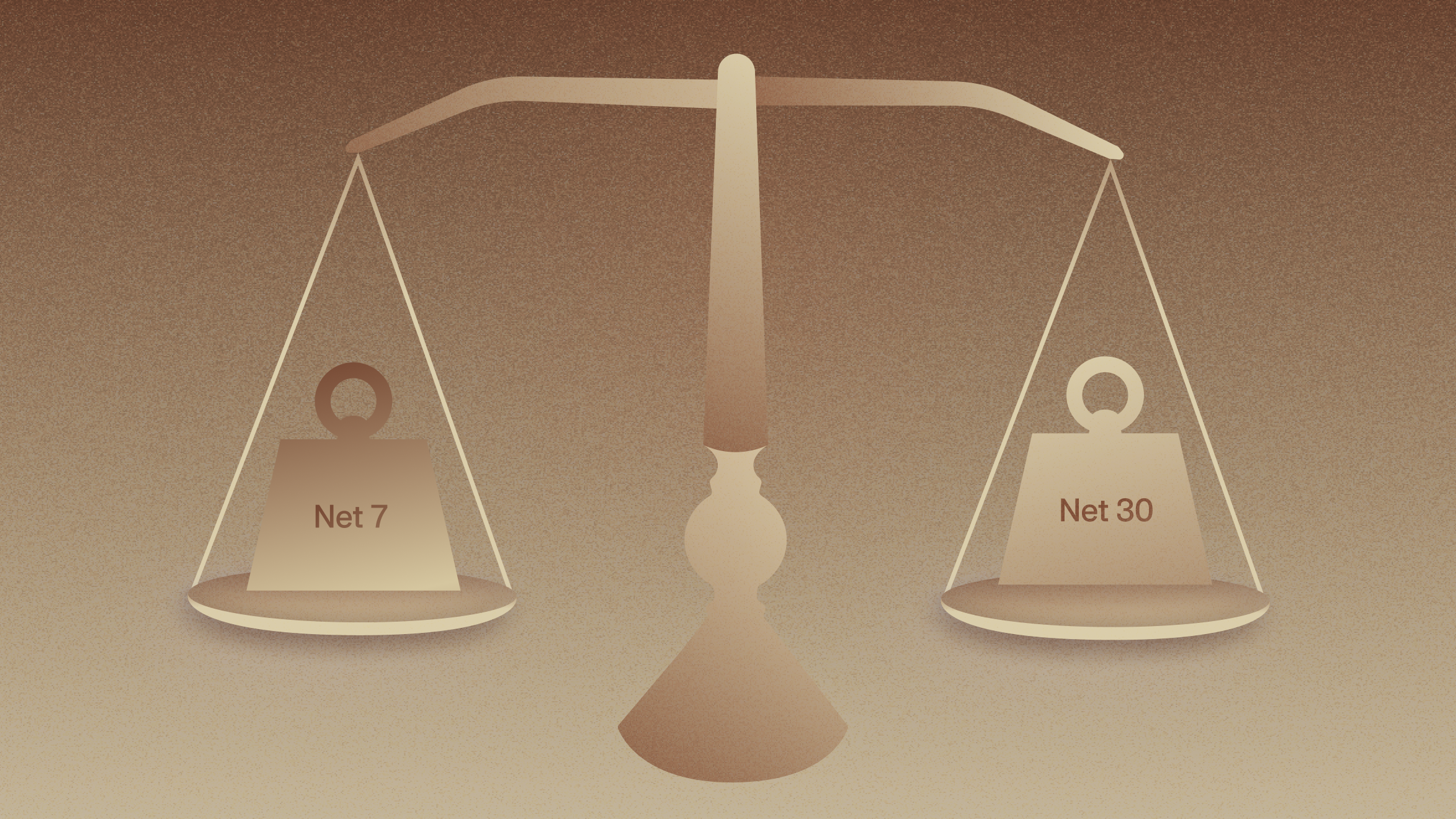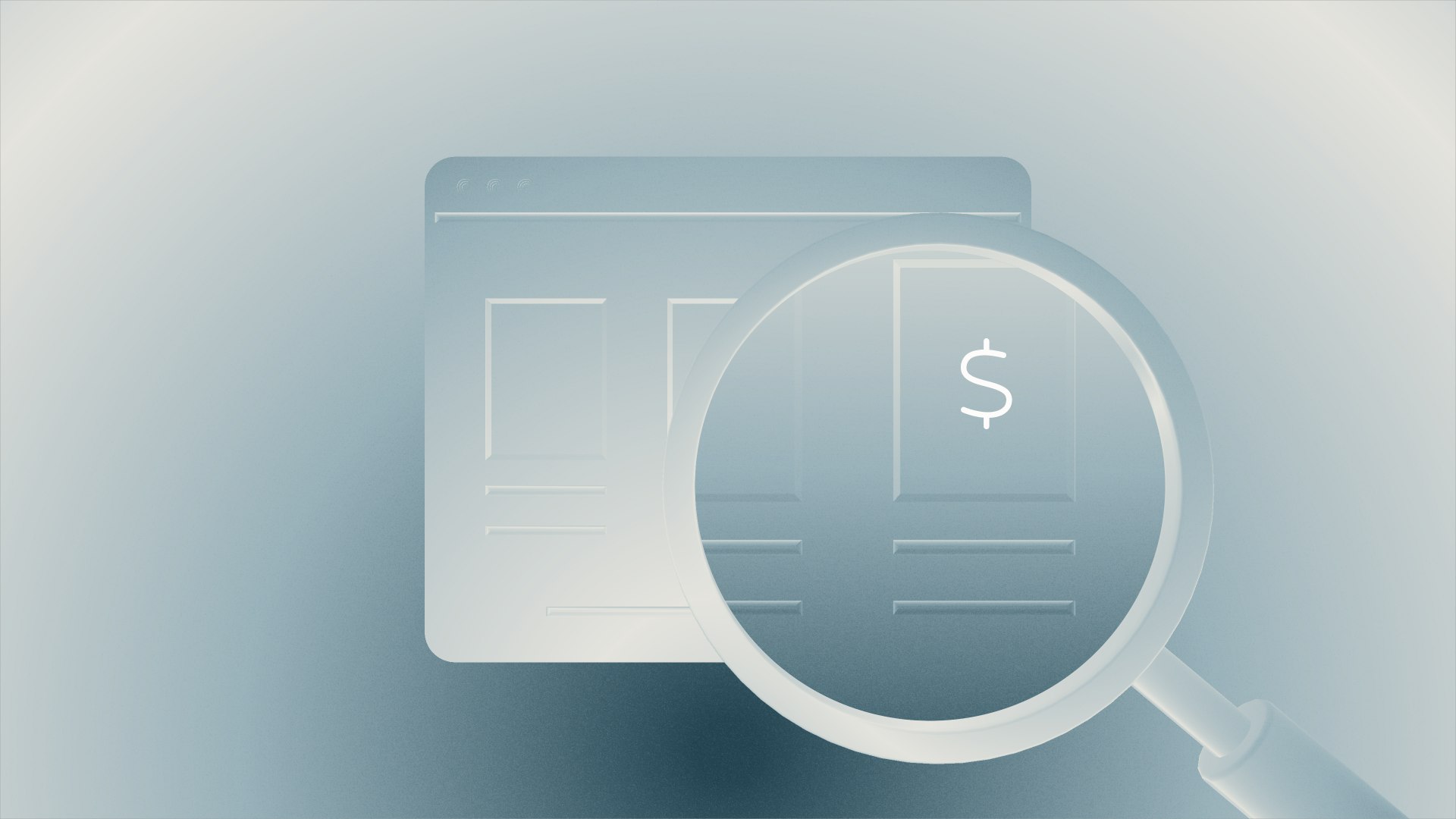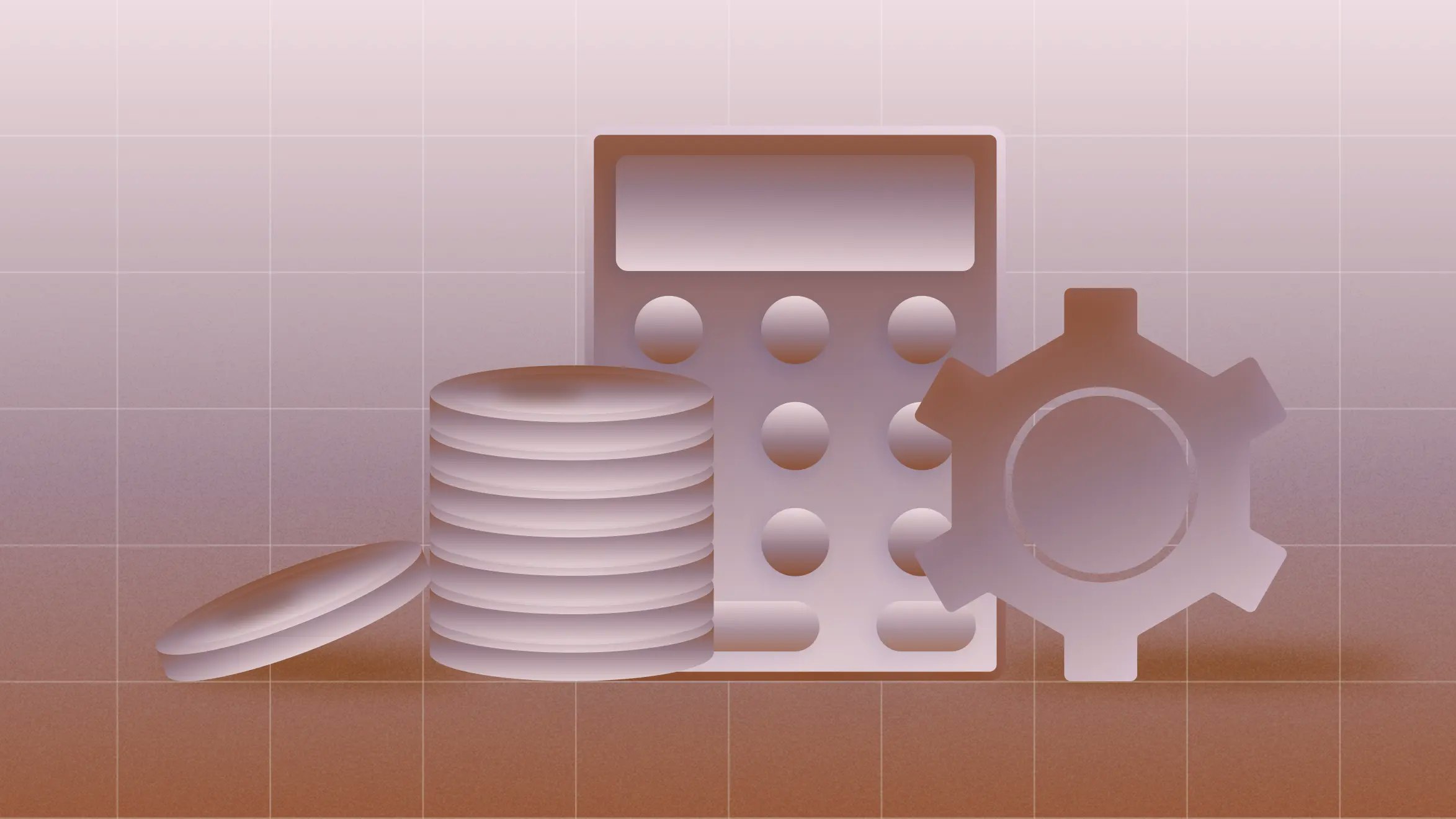Understanding payment terms, from net 7 to net 90

Ask any business owner or vendor which contract terms matter most, and payment timelines are always near the top of the list.
Net payment terms sit at the heart of cash flow management. For buyers, they dictate how long you can hold onto cash after receiving a product or service before paying a vendor. For sellers, they determine when you can expect payment for your work. Given that over half of all invoices are overdue at any moment, settling terms that work for both sides increases the chance that invoices are paid on time (or even early), while reducing the risk of disputes or litigation.
This guide breaks down what you need to know about net payment terms in contracts: the pros and cons of different options, and how to decide what’s best to negotiate as either a buyer and seller.
What are net payment terms?
Net payment terms define how long a buyer has to pay an invoice after receiving goods or services. They’re usually expressed as “net” plus the number of days — for example, net 30 (payment due in 30 days) or net 60. Terms begin on the invoice date, set a clear payment timeline, and often specify accepted methods of payment. They may also include incentives for early payment or penalties for late payment.
Benefits and drawbacks of different net payment terms
Here a breakdown from the perspective of the buyer and seller.
Net 7 and Net 10
For the buyer
Benefits:
- Encourages prompt payment and may help negotiate better terms or discounts on future transactions.
- Some suppliers offer early payment discounts for shorter payment terms, lowering overall purchase costs.
- Consistently meeting short-term payment obligations can boost a company's credit rating and financial reputation.
- Short-term payment obligations can help enforce budgetary discipline and stricter financial controls.
Drawbacks:
- Quick payments reduce the amount of working capital available for other operational expenses and investments.
- Allocating funds for short payment terms may limit spending on other expenses or investments.
- Businesses with tight cash flow may face overdrafts or extra bank fees to cover short-term shortages.
- Processing payments quickly increases the risk of errors, which can cause disputes or delivery delays.
For the supplier
Benefits:
- Quick cash flow reduces the time and risk of outstanding receivables.
- Reliable, quick payments support better forecasting and planning.
- Less need for borrowing to cover cash flow gaps, which lowers interest and financing costs.
Drawbacks:
- May limit the pool of potential buyers who can meet the quick payment requirement.
- Strict enforcement of Net 7 may strain relationships with buyers who want longer terms (risk of churn).
- Quick-payment requirements may need more rigorous credit control and collection processes, raising operational costs.
- Sellers may need to adjust pricing to offset faster cycles, potentially impacting competitiveness.
Net 15
For the buyer
Benefit:
- Provides more breathing room to manage cash flow than shorter terms.
Drawback:
- May still be too short for companies with longer cash conversion cycles.
For the supplier
Benefit:
- Ensures relatively quick payment, improving cash flow stability.
Drawback:
- Still a relatively short waiting period for payment, which may not suit all buyers.
Net 30
For the buyer
Benefit:
- Provides sufficient time to manage cash flow and budget effectively.
Drawback:
- Longer terms can encourage complacency and increase the risk of late payments.
For the supplier
Benefit:
- A standard term that balances quick payment with buyer flexibility, making it widely acceptable.
Drawback:
- Delays cash flow compared to shorter terms.
Net 60 and Net 90
For the buyer
Benefits:
- Longer terms improve liquidity by letting buyers hold cash longer.
- Extra time can be used for operational expenses, investments, or growth.
- Synchronizing payments with sales cycles reduces short-term financing needs.
- Extended terms allow more time for financial planning and budgeting.
Drawbacks:
- Higher risk of missing payment deadlines over a longer period.
- Suppliers may charge higher prices to offset delayed payment.
- Longer terms can signal cash flow problems, hurting creditworthiness.
- The longer payment period may lead to accumulating payables, increasing the risk of financial strain if not managed properly.
- More effort required to monitor and manage payables, raising admin costs.
For the supplier
Benefits:
- Attract more buyers thanks to flexibility, especially for high-ticket items.
- Flexible payment options help secure contracts and retain customers.
- Buyers may place larger orders if given more time to pay, potentially boosting sales volume.
- Can enhance customer satisfaction and loyalty, reducing churn.
Drawbacks:
- Significant delays in receiving payment can strain cash flow and operations.
- Longer periods increase risk of non-payment or late payment, reducing stability.
- May require external financing, raising interest and financing costs.
- Delayed payments tie up capital, limiting growth investments or day-to-day operations.
- Higher admin burden from stricter s credit control and collections.
How do early payment discounts work?
Early payment discounts are incentives suppliers offer to encourage buyers to pay before the due date. These discounts benefit both sides: suppliers improve cash flow, lower the risk of non-payment, and boost liquidity (reducing the cost of working capital financing), while buyers pay less than the full invoiced amount — building goodwill and gaining leverage in future negotiations.
The idea is simple, but contracts spell it out clearly. Here’s a typical example:
- Terms are often written as "2/10, Net 30." This means the buyer gets a 2% discount if payment is made within 10 days, while the full invoice amount is due in 30 days.
- Example: If a buyer receives a $10,000 invoice with "2/10, Net 30” terms, paying within the first 10 days reduces the total to $9,800 — saving $200.
When structured properly, early payment discounts create a win-win for both buyer and supplier.
Choosing the right payment terms for your startup
Every company faces these contract terms at some point — whether you’re buying software, inventory, or services from suppliers, each party has its own preferred terms. And if you’re the supplier, you may be selling on an invoice basis yourself.
For either side, the payment terms you negotiate should reflect your cash conversion cycle, working capital needs, opportunities for early payment or discounts, and — above all — the importance of maintaining a positive relationship with your counterparty. There may come a time when you need to lean on goodwill if a delivery is delayed or terms are breached. A track record of fair terms and on-time payments can go a long way toward sustaining partnerships.
Choosing the right payment terms as a buyer or seller is key to optimizing cash flow and building durable business relationships. By carefully evaluating your financial needs carefully, you can negotiate terms that work for both sides and establish the foundation of a long-term relationship.
Disclaimer: This article is for educational purposes only and does not replace professional business or financial advice. The information is general, may not be current, and is provided in good faith without warranties regarding its accuracy, adequacy, or completeness.



